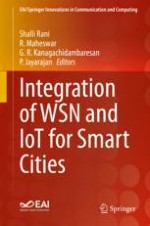This book exploits the benefits of integration of wireless sensor networks (WSN) and Internet of Things (IoT) for smart cities. The authors discuss WSN and IoT in tackling complex computing tasks and challenges in the fields of disaster relief, security, and weather forecasting (among many others). This book highlights the challenges in the field of quality of service metrics (QoS) in the WSN based IoT applications. Topics include IoT Applications for eHealth, smart environments, intelligent transportation systems, delay tolerant models for IoT applications, protocols and architectures for industrial IoT, energy efficient protocols, and much more. Readers will get to know the solutions of these problems for development of smart city applications with the integration of WSN with IoT.
